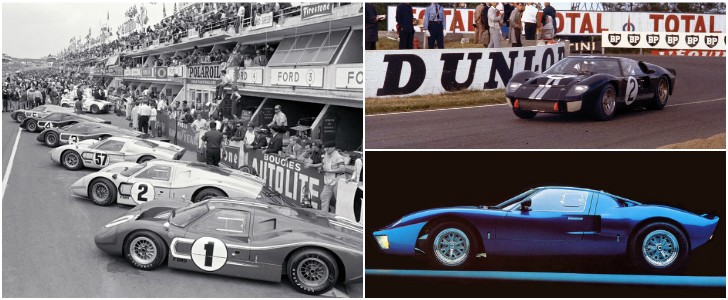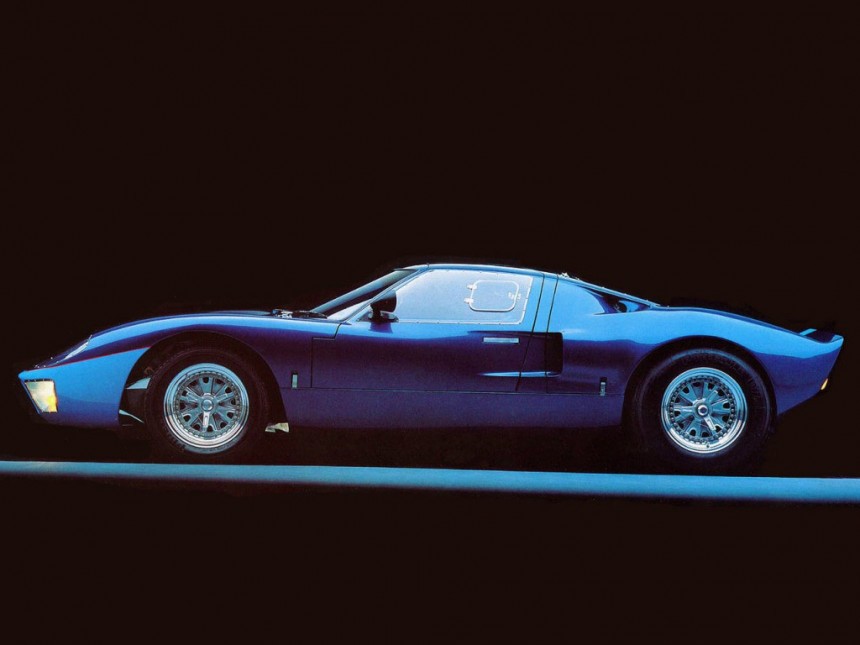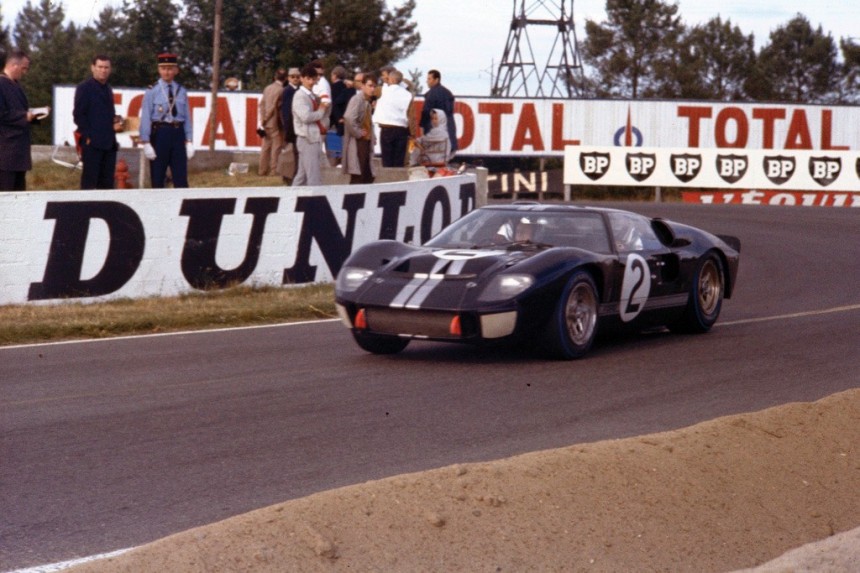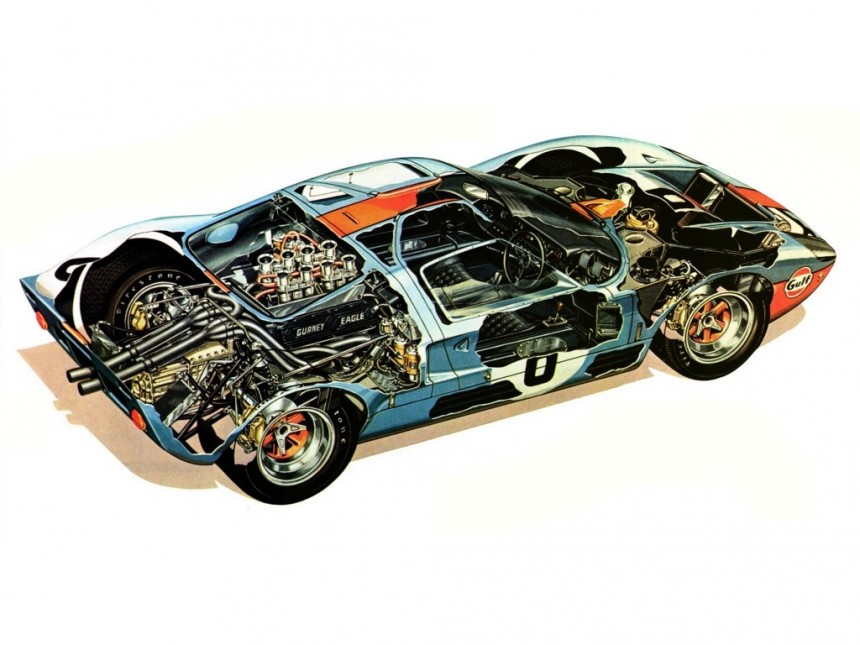Following the downright bloodbath of the 1955 racing season - which culminated with the Le Mans disaster where 84 people died and over 120 were injured - a lot of carmakers started to distance themselves from motorsport-related activities.
Heck, because of the carnage that took place at Le Mans, Mercedes-Benz officially withdrew from all sanctioned forms of racing until the late 1970s. In the U.S. there was a similar uproar against the lack of safety in racing, so much in fact that the Big Three made a gentlemen’s agreement that they will no longer compete in motorsport-related activities.
GM, Ford and Chrysler, along with their sub-brands, were part of a lobbying organization called the "American Automobile Manufacturers Association". The official "recommendation" from the AAMA regarding racing came about on June 7th 1957, almost two years after that horrible 24 Hours of Le Mans accident.
The highly wooden language wording for that recommendation sounded like this:
"Now therefore, This Board unanimously recommends to the member companies engaged in the manufacture and sale of passenger cars and station wagons that they:
1. Not participate or engage in any public contest, competitive event, or test of passenger cars involving or suggesting racing or speed, including acceleration tests, or encourage or assist employees, dealers, or others, or furnish financial, engineering, manufacturing, advertising, or public relations assistance, or supply "pace cars" or "official cars," in connection with any such contest, event, or test directly or indirectly;
2. Not participate or engage in, or encourage or assist employees, dealers, or others to engage in, the advertising or publicizing of: a) Any race or speed contest, test, or competitive event involving or suggesting speed, whether public or private, involving passenger cars, or the results thereof; or b) the actual or comparative capabilities of passenger cars for speed, or the specific engine size, torque, horsepower, or ability to accelerate or perform, in any contest that suggests speed."
What started as a recommendation eventually transformed into an all-out racing ban, so beginning with 1957 none of the Big Three engaged in motorsport activities anymore. At least in theory, because in practice the boys and girls at GM were the first to unofficially break the rules by involving in phantom factory-backed efforts.
The first to officially withdraw from the racing ban was Ford, though. In June 1962, Henry Ford II took the decision to not only get out of the agreement, but to launch an aggressive racing campaign that would put the other two thirds of the Big Three to shame.
The campaign was called "Total Performance," and it took the racing world by storm, especially since it was coming from a carmaker not usually known for high-end motorsport endeavors.
Back then, just about as it is now, the crown jewel of racing was the annual 24 Hours of Le Mans race, and Ford was committed to take that trophy as soon as possible in order to show everyone that "Total Performance" was not just about road-going sports cars but about competition results as well.
During the first half of the 1960s, Ferrari had become the one to beat at Le Mans, with the Maranello outfit having won six of the annual races in a row until Ford put an abrupt and downright vindictive end to that.
Oddly enough, it all started with Enzo Ferrari and Henry Ford II on very good terms with each other. Ford had found out from various sources that Ferrari wanted to sell the company in order to get more investments into its racing program, so negotiations between the two started as early as 1962, when the American carmaker's "Total Performance" program was already underway.
Apparently, Ford had offered approximately $18,000,000 for the Italian sports carmaker, which would be the equivalent of about $141 million today. Keep in mind that Ferrari wasn't as big as it is today as a company, so that amount of money needs an entirely different context to be well-understood; in other words, it was huge.
Either way, negotiations were going pretty well, until Il Commendatore realized that if Ford takes over Ferrari he will no longer have full control over Ferrari's racing activities. On top of that, the Scuderia would probably not be allowed to race on American turf again, at least not in races that were known to be Ford favorites.
This, corroborated with a national hysteria in the Italian press about how Ferrari should remain 100% part of Italian culture, made Enzo change his mind at the very last minute. Ford had already sent a delegation of lawyers to sign the final transaction in 1963, but the deal was off, and so were the good relations between Ford and Ferrari.
Henry Ford II took it pretty personal, and this is pretty much how the Ford GT40 project was born: the car that would not only win Le Mans four times in a row, but also show Enzo that he can be beat at his own game. It was the automotive equivalent of McDonald's making a better filet mignon than a restaurant with three Michelin stars.
Sure, it didn't happen exactly overnight, since what soon became a Carroll Shelby-backed program first resulted in a number of failures in 1964 and 1965.
Ford's stars began to align in 1966, when the closest finish in Le Mans history saw none other than Bruce McLaren – whose name still causes a stir in Formula 1 - and Chris Amon finish first at Le Mans with a Ford GT 40 Mk. II.
Second place? Another Ford GT40 Mk. II from Shelby-American, with Ken Miles and Denis Hulme behind the wheel. Third place? You guessed it, a Ford GT40 Mk. II driven by Ronnie Buckum and Dick Hutcherson.
Ferrari's two 330 P3 cars had been simply overwhelmed by an armada of GT40s, with a bunch of 365 P2s from private Ferrari partners not faring much better either. Enzo's Le Mans nightmare carried over to 1967 as well, when the GT40 Mk. IV driven by Dan Gurney - of "Gurney flap" fame – and A.J. Foyt beat the second-placed Ferrari 330 P4 by four laps.
A Ford GT40 Mk. I with chassis number 1075 returned to Le Mans in 1968 and 1969, winning both events like it was its only job. It was the second time in Le Mans history that the exact same car had won two years in a row.
Considering the context of these four back-to-back victories, you can probably guess that Enzo was not exactly a happy camper. You need to consider that the 1960s saw Lamborghini emerge as a worthy Ferrari rival as well, another occasion when Il Commendatore's own stubbornness led to the creation of an arch-enemy.
In the end, you can say that the Ford GT40 was pretty much the equivalent of an unspoken "Up yours!" from Ford to Ferrari. Featuring Christian Bale in the role of Ken Miles and Matt Damon as Carroll Shelby, "Ford v Ferrari" is a racing movie that you will not want to miss.
GM, Ford and Chrysler, along with their sub-brands, were part of a lobbying organization called the "American Automobile Manufacturers Association". The official "recommendation" from the AAMA regarding racing came about on June 7th 1957, almost two years after that horrible 24 Hours of Le Mans accident.
The highly wooden language wording for that recommendation sounded like this:
"Now therefore, This Board unanimously recommends to the member companies engaged in the manufacture and sale of passenger cars and station wagons that they:
1. Not participate or engage in any public contest, competitive event, or test of passenger cars involving or suggesting racing or speed, including acceleration tests, or encourage or assist employees, dealers, or others, or furnish financial, engineering, manufacturing, advertising, or public relations assistance, or supply "pace cars" or "official cars," in connection with any such contest, event, or test directly or indirectly;
2. Not participate or engage in, or encourage or assist employees, dealers, or others to engage in, the advertising or publicizing of: a) Any race or speed contest, test, or competitive event involving or suggesting speed, whether public or private, involving passenger cars, or the results thereof; or b) the actual or comparative capabilities of passenger cars for speed, or the specific engine size, torque, horsepower, or ability to accelerate or perform, in any contest that suggests speed."
What started as a recommendation eventually transformed into an all-out racing ban, so beginning with 1957 none of the Big Three engaged in motorsport activities anymore. At least in theory, because in practice the boys and girls at GM were the first to unofficially break the rules by involving in phantom factory-backed efforts.
The campaign was called "Total Performance," and it took the racing world by storm, especially since it was coming from a carmaker not usually known for high-end motorsport endeavors.
Back then, just about as it is now, the crown jewel of racing was the annual 24 Hours of Le Mans race, and Ford was committed to take that trophy as soon as possible in order to show everyone that "Total Performance" was not just about road-going sports cars but about competition results as well.
During the first half of the 1960s, Ferrari had become the one to beat at Le Mans, with the Maranello outfit having won six of the annual races in a row until Ford put an abrupt and downright vindictive end to that.
Oddly enough, it all started with Enzo Ferrari and Henry Ford II on very good terms with each other. Ford had found out from various sources that Ferrari wanted to sell the company in order to get more investments into its racing program, so negotiations between the two started as early as 1962, when the American carmaker's "Total Performance" program was already underway.
Apparently, Ford had offered approximately $18,000,000 for the Italian sports carmaker, which would be the equivalent of about $141 million today. Keep in mind that Ferrari wasn't as big as it is today as a company, so that amount of money needs an entirely different context to be well-understood; in other words, it was huge.
This, corroborated with a national hysteria in the Italian press about how Ferrari should remain 100% part of Italian culture, made Enzo change his mind at the very last minute. Ford had already sent a delegation of lawyers to sign the final transaction in 1963, but the deal was off, and so were the good relations between Ford and Ferrari.
Henry Ford II took it pretty personal, and this is pretty much how the Ford GT40 project was born: the car that would not only win Le Mans four times in a row, but also show Enzo that he can be beat at his own game. It was the automotive equivalent of McDonald's making a better filet mignon than a restaurant with three Michelin stars.
Sure, it didn't happen exactly overnight, since what soon became a Carroll Shelby-backed program first resulted in a number of failures in 1964 and 1965.
Second place? Another Ford GT40 Mk. II from Shelby-American, with Ken Miles and Denis Hulme behind the wheel. Third place? You guessed it, a Ford GT40 Mk. II driven by Ronnie Buckum and Dick Hutcherson.
Ferrari's two 330 P3 cars had been simply overwhelmed by an armada of GT40s, with a bunch of 365 P2s from private Ferrari partners not faring much better either. Enzo's Le Mans nightmare carried over to 1967 as well, when the GT40 Mk. IV driven by Dan Gurney - of "Gurney flap" fame – and A.J. Foyt beat the second-placed Ferrari 330 P4 by four laps.
A Ford GT40 Mk. I with chassis number 1075 returned to Le Mans in 1968 and 1969, winning both events like it was its only job. It was the second time in Le Mans history that the exact same car had won two years in a row.
Considering the context of these four back-to-back victories, you can probably guess that Enzo was not exactly a happy camper. You need to consider that the 1960s saw Lamborghini emerge as a worthy Ferrari rival as well, another occasion when Il Commendatore's own stubbornness led to the creation of an arch-enemy.
In the end, you can say that the Ford GT40 was pretty much the equivalent of an unspoken "Up yours!" from Ford to Ferrari. Featuring Christian Bale in the role of Ken Miles and Matt Damon as Carroll Shelby, "Ford v Ferrari" is a racing movie that you will not want to miss.










